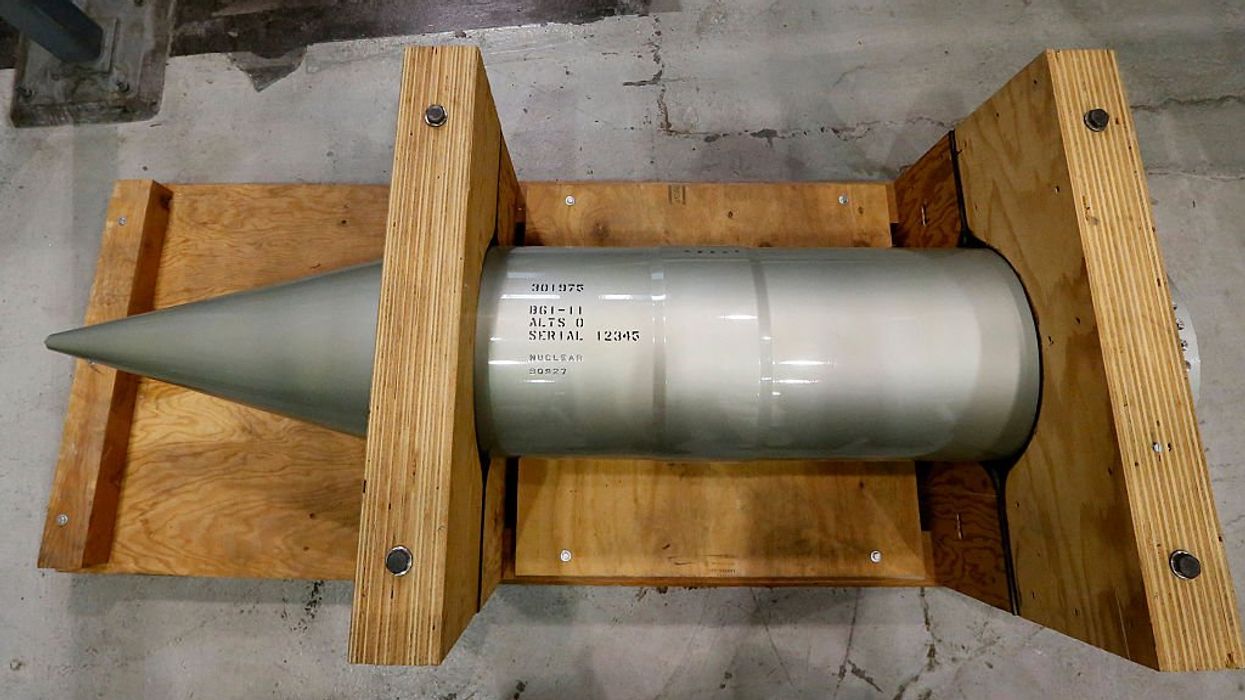
Photo by Robert Gauthier/Los Angeles Times via Getty Images

The Department of Defense announced that it has decided to pursue a nuclear bomb that would be 24 times more powerful than one of the bombs dropped on Japan during World War II. The proposal must receive approval from Congress before the bomb can be built.
The proposal seeks to create a modern variant of the B61 nuclear gravity bomb, which will be known as the B61-13 if it gets approval from Congress, according to a statement that was released on Friday.
The statement said that the Department of Energy's National Nuclear Security Administration would be responsible for producing the B61-13. It went on to suggest that the reason that it needs to be built is to respond to the "demands of a rapidly evolving security environment as described in the 2022 Nuclear Posture Review."
"Today's announcement is reflective of a changing security environment and growing threats from potential adversaries," John Plumb, assistant secretary of defense for space policy, said. "The United States has a responsibility to continue to assess and field the capabilities we need to credibly deter and, if necessary, respond to strategic attacks, and assure our allies."
The release also included a fact sheet on the B61-13, detailing some of the features it would include. Fox News Digital reported that the B61-13 would have a similar yield to the B61-7, which has a maximum yield of 360 kilotons. The yield is approximately 24 times larger than the bomb that was dropped on Hiroshima during World War II, which was a 15-kiloton bomb.
Under the "balanced approach" header in the fact sheet, the Pentagon claimed that "deterrence and assurance are enhanced if the United States can continue to deny an adversary sanctuary from attack."
The fact sheet went on to suggest that the B61-13 "will provide the President with additional options against certain harder and large-area military targets, even while the Department works to retire legacy systems such as the B83-1 and the B61-7."
"The B61-13 will not increase the overall number of weapons in the U.S. stockpile. The number of B61-12s to be produced will be lowered by the same amount as the number of B61-13s produced."
The statements made in the fact sheet raise questions about whether the U.S. intends to use such destructive weapons against military opponents, despite claiming that they would be used for "deterrence and assurance."
The announcement comes as military conflict has increased around the globe, including in Ukraine and the Middle East. The U.S. recently announced that it planned to carry out non-explosive nuclear experiments in Nevada, which has been referred to as "tickling the dragon's tail."
Corey Hinderstein, deputy administrator for defense nuclear nonproliferation at the National Nuclear Security Administration, said that the goal of the upcoming experiments is to push forward "our efforts to develop new technology in support of U.S. nuclear nonproliferation goals."
"They will help reduce global nuclear threats by improving the detection of underground nuclear explosive tests," Hinderstein said, referring to the experiments.
Like Blaze News? Bypass the censors, sign up for our newsletters, and get stories like this direct to your inbox. Sign up here!